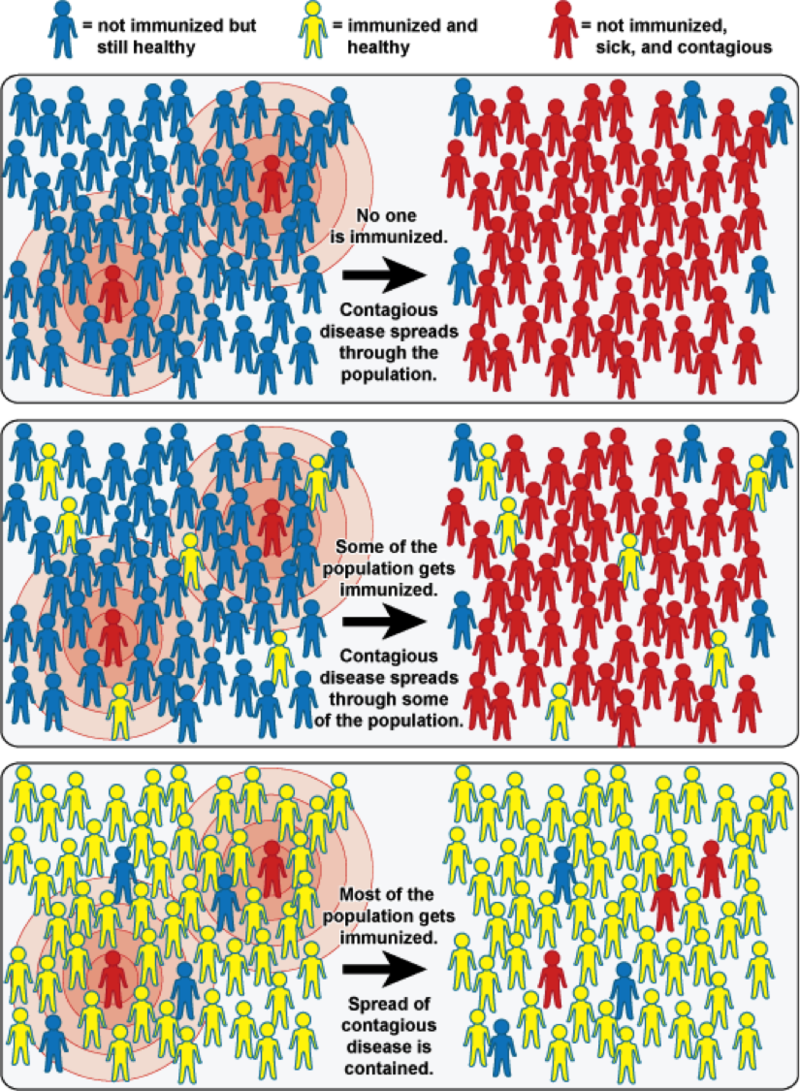FA16 Immunization Module’s Updates
Relative safety of vaccines
In the past decade, the question of the safety of vaccination has garnered considerable attention, largely in the mainstream, non-scientific or medical population. It is not an enormous leap of logic to see that this questioning is unsurprising, given the decreased visibility of the risk of the communicable diseases vaccines protect against. There is merit to an argument about the safety of vaccines, less so the question of relative safety of vaccines.
As with any treatment, a clinical decision must weigh the risks and benefits of multiple courses of action, as very few clinical decisions will ever truly be 100% devoid of risk. For vaccines, the risk of not vaccinating, contracting the illness in question, must be weighed against the risks of vaccinating. Vaccines have allowed much of the developed world to be generations away from firsthand recollection of the diseases they prevent. And furthermore, through the phenomenon of herd immunity, individuals may through anecdotal evidence reinforce their belief that the threat of not vaccinating is non-existent, rather than invisible. However, herd immunity is a tenuous state maintained only through the vaccinations of the vast majority of the susceptible population. The very present, if not tangibly apparent, risk of non-vaccinating is a host of extremely dangerous illnesses, ranging from polio to smallpox, which can be devastating or lethal to a child.
The risks of vaccinating, on the other hand, are considerably less impressive. The most commonly experienced side effects will be fever, chills, muscle aches, and fussiness. The most serious possible side effect is that of a serious allergic reaction, which is life threatening, but occurs with a frequency of about one in a million vaccinations.
<http://www.cdc.gov/vaccines/parents/tools/parents-guide/downloads/parents-guide-part3.pdf>



I agree that misinformation has largely driven this idea that vaccines are more unsafe then that actually are. I think it is also important to note that many people believe that since many of these diseases such as polio are largely unseen in the industrialized world that a vaccine is no longer necessary believing that vaccines are another way to just garner money or incentive. So I think as important as finding a way to present information to the public proving the safety of vaccines is to find ways to gain their trust of the medical community so they are more receptive to the information that is given to them.
Misinformation has been responsible for much of the fears and false ideas about vaccines. The internet has been a large driver of misinformation regarding vaccines. While there is plenty of good information on the internet about vaccines, there is also information that is clearly untrue. Simply typing vaccines unsafe will give you over 600,000 results with many of the pages posting information that is not backed by any scientific research. To give an example of some of the extreme statements out there on the web, there is one site that says the pharmaceutical industry are servants of the Illuminati and they are trying to reduce the global population.
One of the issues people can have when determining the relative safety of vaccines is that misinformation can lead them into thinking that vaccinations are more dangerous than they really are. All it takes is a sensational headline saying that vaccines cause autism in children or something equally fear-mongering and suddenly parents will decide that vaccines are just too risky. There really needs to be better methods of educating the general public that the relative risk of vaccinations is actually quite low.